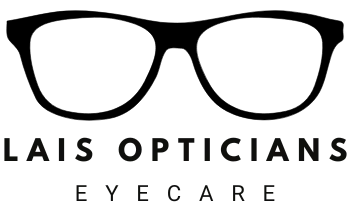Myopia, commonly known as short-sightedness, is a vision condition in which a person can see nearby objects clearly, but objects farther away appear blurry. Myopia is a common condition that affects millions of people worldwide. In this blog, we will discuss the causes, symptoms, diagnosis, and treatment of myopia.
Causes:
Myopia occurs when the eye is too long or the cornea is too curved, causing light entering the eye to focus incorrectly. This causes distant objects to appear blurry. Although the exact cause of myopia is unknown, genetics, environmental factors, and lifestyle choices can all play a role in the development of myopia.

Symptoms:
The most common symptom of myopia is difficulty seeing distant objects. Other symptoms may include eyestrain, headaches, and squinting. Children with myopia may have difficulty seeing the board at school or may sit very close to the TV. If you experience any of these symptoms, it is important to see an eye doctor for a comprehensive eye exam.
Diagnosis:
Myopia can be diagnosed through a comprehensive eye exam, which includes a visual acuity test, a refraction test, and a dilated eye exam. During the visual acuity test, you will be asked to read letters on a chart from a distance. The refraction test measures the amount of short-sightedness you have, and the dilated eye exam allows the eye doctor to examine the back of your eye for any abnormalities.
Treatment:
The most common treatment for myopia is corrective lenses, such as glasses or contact lenses. These lenses adjust the way light enters the eye, allowing distant objects to appear clearer. If you prefer not to wear glasses or contact lenses, you may be a candidate for refractive surgery. Another option for myopia treatment is orthokeratology, where you wear special contact lenses overnight to reshape the cornea and improve vision during the day.
One important aspect to consider when choosing glasses for correction of Myopia, is that where a prescription is in the mid to high range, standard lenses may result in thick edges (due to its concave form), dependant on certain factors, ie, size, shape. Opting for smaller frames and/or thinner lenses can counteract this.

Prevention:
Although myopia cannot be prevented, there are some steps you can take to reduce your risk of developing myopia. Spending time outdoors and limiting time spent on close-up activities, such as reading or using electronic devices, may help reduce the risk of myopia. It is also important to have regular eye exams to detect and treat myopia early.
In conclusion, myopia is a common vision condition that affects millions of people worldwide. If you are experiencing difficulty seeing distant objects or any other symptoms of myopia, it is important to see an optometrist for a comprehensive eye exam. With the right treatment and preventative measures, myopia can be managed effectively.
